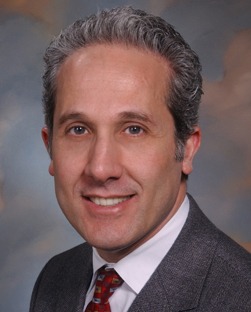
By Mohamed Hamdan
The low rate of diagnosis in patients with syncope has been attributed to under-use of tests, such as orthostatic testing and carotid sinus massage, and premature discontinuation of prolonged monitoring in patients with suspected cardiac syncope. Another problem is the number of unwarranted admissions. On the average, one out of 10 patients presenting with syncope are hospitalised with a mean cost of US$12,640 per inpatient evaluation1.
While the intent is to provide the best care, such practice has never been shown to improve outcome and mortality in the majority of cases. Recognising these challenges, the interest in syncope units has recently emerged. The purpose of these units is to provide a standardised assessment in the evaluation of patients with transient loss of consciousness and reduce the number of inappropriate admissions.
Many investigators have shown that the use of Syncope Units lead to an improvement in diagnostic yield and cost-effectiveness. While some of the earlier studies were uncontrolled and observational, several subsequent studies confirmed these findings.
Shen et al2 performed a randomised controlled study including 103 intermediate-risk syncope patients. Subjects were randomised to “standard care” vs. evaluation in a “syncope unit” associated with the emergency department. Syncope units included six-hour ECG monitoring, echocardiography, tilt-table testing and electrophysiology consult.
The authors found that the rate of diagnosis was higher in the syncope unit arm when compared with standard care (67% versus 10%, p<0.001). Similarly, they found that the rate of admission was lower in the Syncope Unit arm when compared with standard care (43% versus 98%, p<0.001). Daccarett et al3 performed a retrospective validation of a new guideline-based faint algorithm derived from the most recent American and European guidelines (F2 Solutions, Inc Sandy, UT) in 254 consecutive patients who presented with syncope to the emergency department over a six-month period. The authors found that 69 (58%) out of 118 admissions and eight (6%) out of 136 discharges were inappropriate. The use of the new guideline-based criteria would have allowed a safe 52% reduction in admission rate without a significant difference in the prevalence of serious events in the discharged group. In the largest study thus far, the Syncope Unit Project (SUP) investigators published their experience from nine Italian hospitals with certified syncope units4. The patients’ cohort included 941 patients: 60% in the outpatient setting, 24% from the emergency department and 16% in the inpatient setting. Using a systematic guideline-based management, an early diagnosis was established in 21% of patients and within 45 days in another 61% of patients with a mean of 2.9±1.6 tests per patient. At the end of the evaluation, the rate of unexplained diagnosis was 18% despite the use of 3.5±1.8 tests per patient.
Recently, we reported our own experience from the Faint and Fall Clinic (FFC) at the University of Utah 5. The purpose of the study was to test the hypothesis that use of a new standardised-care pathway reduces hospital admissions, improves diagnostic yield and decreases resource consumption when compared to the conventional approach in patients presenting with fainting spells. The study was a retrospective comparison of the evaluation of patients with faint using the standardised approach versus the conventional approach. The active group included consecutive patients who were referred to the University of Utah FFC for the evaluation of fainting spells between December 2010 and April 2011 (n=154, standardised group). The control group included consecutive patients who were referred for faint evaluation before the FFC was established during the period of September and October 2009 (n=100, conventional group). There were three main findings in the study. First, the use of a standardised approach resulted in a significant decrease in the number of admissions: 4% vs. 20% in the total population (p<0.001).
Second, the rate of diagnosis at 45 days for outpatients was significantly higher with the standardised approach when compared to the conventional approach: 57% vs. 39%, p=0.02. Third, the above endpoints were achieved with less use of costly tests and consultations: 1.9±1.0 vs. 2.6±1.2, p=0.001.
Conclusion
In summary, syncope units have been shown to increase the rate of diagnosis and decrease the number of admissions and test utilisation. The success of such units requires having 1) The “right” specialist (single syncope expert or a team of physicians); 2) Standardised assessment that could be facilitated with the introduction of an interactive decision-making software; and 3) Core equipment and access to specialised tests. It is important to note that data thus far have shown improvement in short-term outcome. The long-term effects on the rate of diagnosis, total mortality and cost await future trials. Additional randomised studies comparing the different approaches are needed.
References
1. Malasana et al. Pacing Clin Electrophysiol 201; 34:278–83
2. Shen et al. Circulation 2004; 110:3636–45
3. Daccarett et al. Europace 2011; 13:1632–38
4. Brignole et al. Europace 2010; 12:109–18
5. Sander s et al. Pacing Clin Electrophysiol 2012. Epub
Mohamed H Hamdan is the chief of Cardiovascular Medicine at the University of Wisconsin School of Medicine and Public Health, Madison, USA









